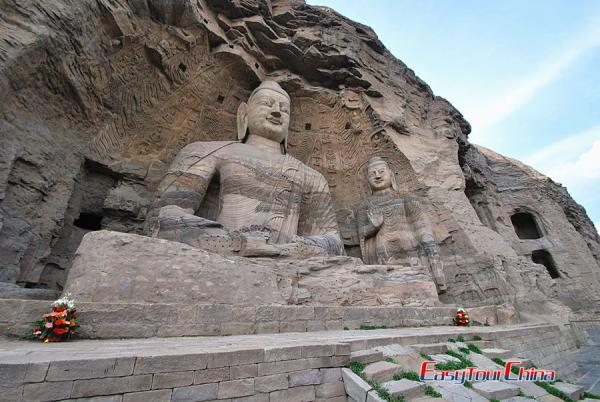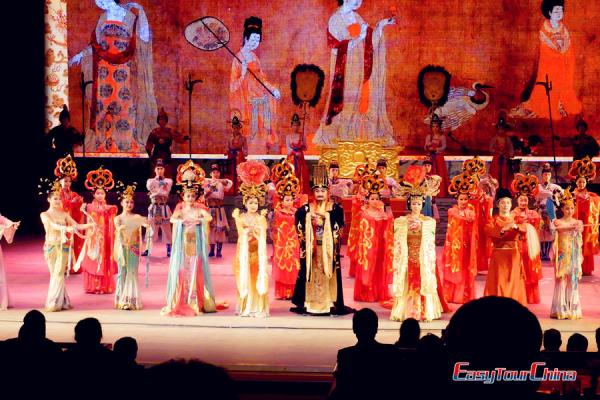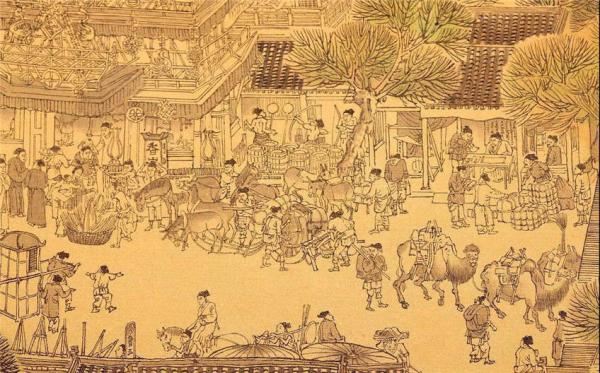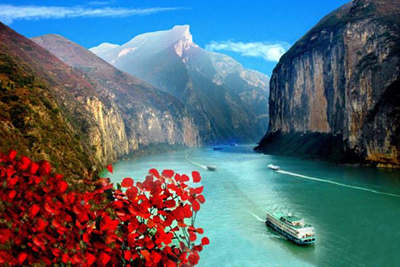Which Are the Best Chinese Dynasties in Art (Music/Painting/Calligraphy/Grottoes Art)?
Chinese art has been isolated from other cultures for centuries. As a result, its style and the way it understands art has hardly changed from ancient times to the 20th century.
After the reform and opening up, Chinese traditional art has gradually come to the attention of the world and is loved and appreciated by people from all countries, becoming the common cultural wealth and heritage of mankind.
In this article, we list the Chinese dynasties that are best at art, including music, painting, calligraphy, and grottoes art.
Basic Characteristics of Ancient Chinese Art
Chinese artwork depended on the social class in which the artist lived. They also created different theories of Chinese art, which were mainly based on Confucian and Taoist.
● Most ancient Chinese art forms were created in the court to cater to the kings and the nobles.
● Simple and elegant, without any details. Everything is essential, seeking a balanced, rhythmic form of the object.
● Chinese artworks are imbued with sensitivity. Enjoy Chinese art with your senses.
● It has always been marked by the dynasties that ruled at the time, and therefore by Chinese culture.
● One of the fundamental principles of Chinese art is the synthesis between the spirit of artistic creation and the social and hierarchical functions they are destined to achieve in their conception.
● The painted murals that appear in traditional Chinese architectures have a wide range of subjects that have both decorative and symbolic value. They depict dragons, phoenixes, myths, landscapes, floral motifs, birds and more.
Han Dynasty Calligraphy
The Han dynasty was the heyday of Chinese calligraphy, with a wide variety of artistic effects. The Han dynasty inherited its system from the Qin dynasty, but gradually abandoned the small seal script of the Qin dynasty. Instead, the clerical script was widespread.

The clerical script left over from the Han dynasty include surviving ink calligraphy and the inscription on the table. Ink calligraphy were written on bamboo and wooden slips, such as the Pali script unearthed at Mawangdui in Changsha, Hunan, and the Sun Bin Art of War unearthed in Shanxi.
In the Western Han Dynasty there were already a large number of inscriptions written in clerical script, but there are very few inscriptions written in clerical script from that period, so there are also very few cultural relics unearthed, only the "Record of the Carving of Stones on the Mountain by Yang Qian Buy" unearthed in the Western Han Dynasty. But there were many unearthed in the Eastern Han Dynasty, with a great variety, more than three hundred types of which have been handed down to modern times.
Grottoes Art in Wei, Jin, Northern and Southern Dynasties
From the Three Kingdoms to the Wei and Jin Dynasties and the Northern and Southern Dynasties, a total of 361 years were spent in war and strife, with few days of peace and many times of war. Because of the impermanence of the world and the fact that human life was as cheap as an ant, Buddhism, which began to flourish in the Eastern Han Dynasty, were promoted by the ruling class. Religious architecture developed in leaps and bounds during this period, including masterpieces of grottoes.
All four great grottoes in China, including Yungang Grottoes, Longmen Grottoes, Mogao Grottoes, Maijishan Grottoes, were built during the Wei, Jin and North and South Dynasties, and renovated in the latter dynasties.

In addition to the grottoes, Buddhist pagodas also developed during this period.
Tang Dynasty Music
The Tang Dynasty (618-907 AD), ruled by Li Yuan and his descendants, was the most powerful empire in Chinese history.During the Tang Dynasty, merchandise trade and cultural exchanges were more active than ever before. Chang'an (today’s Xian), the capital city of the Tang Dynasty, was home to “220 types trades”, and was an international open city with ambassadors and merchants from all over the world. It was the birthplace of the Silk Road and a sanctuary of cultural exchange. In terms of ideology, the Tang Dynasty did not revere Confucianism alone, but carried out the three religions of Confucianism, Buddhism and Taoism simultaneously. This contributed to economic development and the flourishing of literature and art.
The Tang Dynasty was a golden age for poetry. The art forms, which were equally as distinguished as the literary achievements, continued to shine. Painting, sculpture, calligraphy, music, dance, acrobatics, architecture and other artistic forms, all flourished as never before and achieved splendid artistic success.
The ancient Chinese attached no less importance to music than modern society, and the development of ancient music reached its peak during the Tang Dynasty. Ancient Chinese music reached its peak during the reign of Emperor Xuanzong of the Tang Dynasty, when the court musicianship grew rapidly, the number of court musicians increased, and large scale performances could be staged.
The music institutions of the Tang dynasty can be roughly divided into the Music Department, the Drum and Blow Department, the Teaching Studio and the Pear Garden, the first two belong to the Tai Chang Temple, the latter two belong to the court.

The pipa was one of the main instruments in the orchestra of the Tang dynasty. It has come to resemble the form of the pipa of today. The pipa of Fujian Nanqu and Japan still retains some of the characteristics of the Tang pipa in terms of form and method of playing.
Li Longji, Emperor Xuanzong of the Tang Dynasty, was one of the few emperors in China's history with a high degree of musical talent. He excelled in composing, playing and conducting, and was good at playing the karmic drum and the horizontal flute. He composed the famous "Little Broken Array Music" and the “Melody of White Feathers Garment”.
Xian Tang Dynasty Show is the best shows to enjoy Tang music and dance.
Song Dynasty Painting
The Song dynasty was the heyday of Chinese painting, a period in which various forms of landscape painting, flower and bird painting, and scholarly literati painting emerged, presenting a distinctive style different from that of previous generations.
At the beginning of the Northern Song Dynasty, the Hanlin Academy of Painting and Calligraphy was set up at the court, which helped to promote the development of painting in the Song Dynasty and to train and educate a large number of painting talents. Under the reign of Emperor Huizong, the painting academy became more and more complete, and the 'study of painting' was officially included in the imperial examinations, allowing painters to take the examinations and enter the palace as officials.

Flower and bird painting occupied a major place in court painting during the Northern Song period. The main achievements of figure painting, on the other hand, were in the creation of religious paintings and portraits of people and their stories and customs.
After the middle of the Northern Song Dynasty, literati such as Su Shi, Huang Tingjian and Mi Fu became active in the field of painting. The rise of this trend was a major event in the history of Chinese painting. They gradually increased the number of inscriptions and poems on paintings, opening up a new world of calligraphy and painting inscriptions, greatly enhancing the expression of the art of painting.


